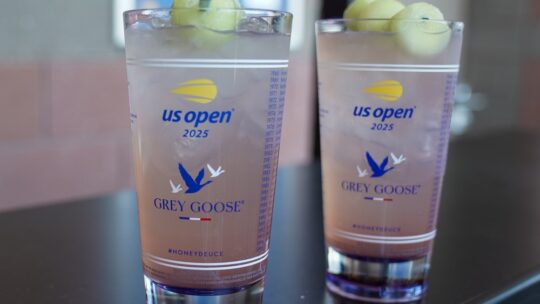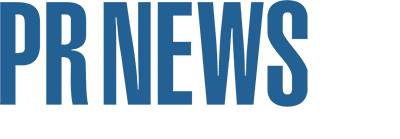
In this week's PR Roundup new data shows us which brands won the U.S. Open in regards to audience attention and engagement, we learn how CEOs should communicate price increases, and new a Sprout Social study reveals that consumers prefer human-generated content rather than AI.
Which Brands Won the U.S. Open?
What happened: This year’s U.S. Open won not only on the court but also with brand sponsors, according to fresh Meltwater data. The tournament generated 1.33 million posts—a 60% jump from last year—with engagement spikes driven by everything from viral moments (remember the millionaire CEO snatching a kid’s hat?) to star power posts from Carlos Alcaraz and Novak Djokovic. The finals certainly brought the biggest surge in attention, but it was President Donald Trump’s Sept. 7 appearance in the stands that claimed 22% of conversation that day, showing how quickly famous names can reshape the narrative.
For sponsors, strategic plays paid off. In alcohol, Grey Goose dominated thanks to its famous Open tradition—the Honey Deuce cocktail. In sportswear, Nike owned the conversation by volume, while Lacoste leaned on its ambassador Djokovic to drive deeper engagement despite fewer posts. Meanwhile, the beauty category showed two very different paths: Dove’s steady TV presence generated more mentions, but La Roche-Posay’s influencer approach tripled engagement. One creator’s post alone accounted for nearly half of its total traction.
Finance brands carved out smaller shares of the chatter, but still found ways to cut through. American Express led in visibility, while Morgan Stanley snagged strong engagement off a single player (Leylah Fernandez) shoutout.
Communication takeaways: Viral moments can’t be predicted, but smart sponsorship strategies can set the stage. Whether it’s a cocktail, a player endorsement or an influencer partnership, the U.S. Open's activations show that brands win when they align themselves with moments that spark authentic conversation—and when they’re ready to amplify those spikes in real time.
Anna Amarotti, Global Enterprise & Marketing Intelligence Lead at Meltwater and report author, says that sponsorship strategy for these large events really shapes resonance for the companies involved.
“Brands that combine athlete and tournament sponsorship [are shown to] achieve deeper engagement,” Amarotti says.
She noted three trending strategies that emerged for sponsors this year.
- Different approaches drive different results: Dove gained visibility through TV commercials, while La Roche-Posay relied on influencer partnerships to generate over three times more engagement than Dove.
- Celebrity associations are double-edged: Partnering with high-profile figures increases attention but can also trigger negative sentiment. Rolex saw spikes in posts tied to Jannik Sinner’s Rolex-wearing interview and President Trump’s attendance at the box suite, which drove both visibility and some criticism.
- Ambassador-driven content can outperform volume: Even brands with fewer mentions can drive high engagement when content is tied to a prominent ambassador. Morgan Stanley, for example, achieved nearly 30K engagements from just 79 posts, largely thanks to Leylah Fernandez’s post thanking her sponsors.
CEO Calls HBO Max “Way Underpriced,” Promises Price Increase
What happened: This week at the Goldman Sachs Communacopia & Technology Conference, Warner Bros. Discovery CEO David Zaslav told the audience that HBO Max is “way underpriced,” signaling plans for subscription price increases across its streaming tiers.
According to The Hollywood Reporter, Zaslav emphasized that given the platform’s strong movie, TV and streaming content, there is a “real opportunity … in that quality area, to raise prices.”
He framed the move not as abrupt, but as a long-game strategy: content quality, expansion and global rollout make his case for elevated pricing.
He also announced a tightening of its password-sharing policy. Zaslav confirmed the company plans, signaling a more aggressive approach to control account sharing.
Communication takeaways: In an economy where value meal deals seem to be exploding due to worsening consumer sentiment, expanding unemployment and inflation, a leader suggesting a price increase might appear tone deaf.
According to Lindsay Nahmiache, CEO, Jive PR+Digital, leadership is all about how you deliver news and information.
“In today’s climate, where consumers are already feeling squeezed by inflation and job insecurity, executives need to balance financial strategy with empathy,” Nahmiache says. “Announcing price increases or cracking down on password sharing without framing the value proposition risks sounding tone deaf, and that can quickly erode trust and loyalty.”
However, Nahmiache also notes if the announcement is done right and includes an explanation of value, people may understand and support it.
“When price adjustments are necessary, brands should lead with a clear narrative around added value—whether it’s enhanced content, innovation or improved user experience, so customers understand what they’re gaining, not just what they’re paying,” she says.
She notes that certain industries, like entertainment, can see backlash build in different ways, and that communicators should be prepared during any change announcement.
“Customers often view streaming services as a daily escape,” she says. “Instead of simply saying ‘prices are going up,’ leaders should acknowledge the financial pressures audiences face and communicate with empathy and accountability. Doing so reframes the message from a corporate money grab to an investment in delivering even better experiences.”
Study: Consumers Trust Brands With Human-Generated Content Over AI
What happened: Trust is still a human’s game. Sprout Social’s Q3 Pulse Survey found that nearly 55% of consumers say they’re more likely to trust brands that prioritize human-generated content over AI. That trust gap widens among Millennials (62%) and Liberals (61%), signaling that brands should carefully weigh how much AI plays into their content mix.
AI can still be a useful tool, but disclosure matters. More than half of consumers (52%) flagged their biggest ethical concern as brands using AI without saying so—ranking it right alongside data misuse.
The “action figure” trend is a great case study: Sephora tapped AI to spin its version on Instagram, netting an estimated media value of $185,279. Meanwhile, Trixie Cosmetics went all-in on a designer-created take and saw a whopping 34.59% engagement rate (versus the 0.04% industry average). The message for communicators: audiences don’t necessarily fear AI, but they do expect brands to be upfront—and they still respond to the human touch.
Communication takeaways: For PR pros, the challenge isn’t just whether to use AI, but how to balance efficiency with authenticity and keep trust at the center of the story.
Scott Morris, Chief Marketing Officer, Sprout Social, says brands must navigate the AI culture with an unwavering commitment to authenticity.
“The choice to embrace or avoid AI-generated content is not binary, but hinges on a brand’s core values and audience expectations,” Morris says. “Transparency is non-negotiable and it’s the cornerstone of trust in an era where consumers demand clarity on how content is created.”
Morris also notes that by prioritizing honesty, brands can harness AI as a powerful tool for innovation or champion human creativity to forge deeper connections.
“Either path, when executed with integrity, strengthens credibility, drives engagement and cements lasting trust with audiences.”
Nicole Schuman is Managing Editor at PRNEWS.
